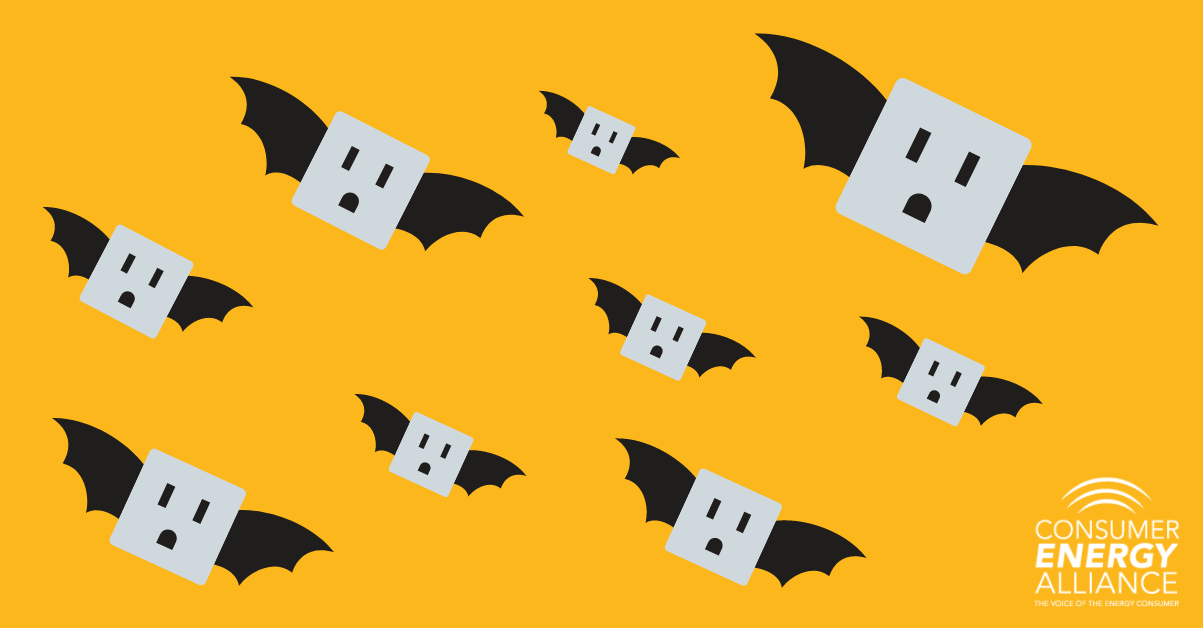Halloween is here! That means it’s time to look out for ghosts, monsters and other things that go bump in the night. It’s also the time of year when the days get shorter, darker and the temperatures drop. That means consumers will be changing their habits and using more energy. Which means it’s the perfect time of year to start practicing more energy efficiency and avoid this season’s Energy Vampires!
Fortunately, you won’t need a garlic necklace to fend them off. Instead, try introducing commonsense practices into your household routines and watch some of the money that you’ve been spending on utilities end up back in your pocket. Plus, it’s important to understand how each of us can play our part as we work to reduce our energy consumption to slow the effects of climate change.
Chargers and devices
Many households rely on a variety of electronic devices like chargers and appliances. More often than not, these items are left plugged in for much of the day, if not all day. This practice turns these items into energy vampires – drawing power from the outlets where they sit. For increased efficiency, unplug devices that are fully charged or not in use. Another option is to use power strips that have an on-off switch. By using a power strip, it’s easy to switch off the power flow to multiple devices. Use this website to calculate the “bite” vampire appliances can take out of your wallet.
Air leaks
Air leaks around doors, windows and even electrical outlets can make it more difficult to heat your home efficiently. In addition, these air leaks can sometimes contribute to the deterioration of your walls due to moisture seeping in. If you think you might have this problem, bring in a technician from a private company or a public utility to perform an energy audit on your home to identify leaks that can be repaired.
Lightbulbs
Lightbulbs are a mixed bag. For starters, if you are using incandescent, halogen, and compact fluorescent bulbs, they are probably using more energy. Overtime, you can save money by investing in energy efficient light bulbs. Not only do LEDs produce energy 90% more efficiently, the incremental costs of that energy add up over time. So while LEDs might seem like a big upfront cost, they last years. Saving you the cost of buying new lightbulbs as often and lowering the amount of energy you use over time.
Overheating the whole house
Central heating is great, but there is no reason to heat every room in your home to the same temperature – especially if you don’t use them all. One trick is to keep your thermostat relatively low and then place a space heater in the room or rooms that you use the most. Turn the space heater on when folks are present, turn it off – along with the lights – when you leave the room.
You can also shut the vents in rooms you don’t use and close the doors. Heat will be diverted to the rooms where the vents are open and keep those rooms you use nice and toasty.
Drippy faucets
Drippy faucets aren’t just annoying – they can also be a significant energy vampire if the drip is coming from a hot water tank. Address drippy faucets the right away to save money and the enamel in your tub or sink.
By implementing these safeguards against energy loss, you’ll help ensure a warm and energy efficient winter season for you and your family. You’ll also be able to enjoy the money that you’ve saved by taking steps to rid your home of energy vampires!
Unlike Halloween, energy vampires last year-round. Learn more about how you can protect your home – and your wallet – as we head into winter.

